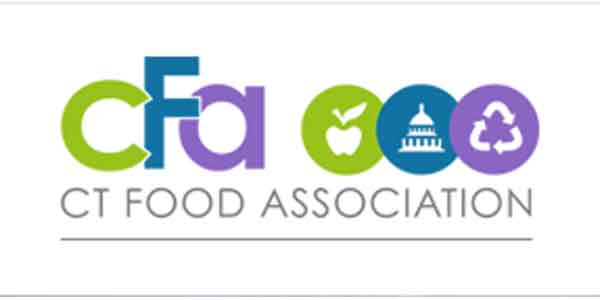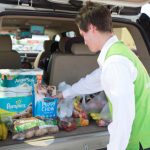New rules were developed last night outlining additional protective measures that every workplace in Connecticut deemed essential—and any other business or nonprofit allowed to remain open—must follow.
The following Safe Workplaces Rules for Essential Employers, which took effect immediately, are mandatory throughout the state.
General
- Essential employees who are able to work from home SHOULD BE WORKING FROM HOME.
- For employees who have traveled internationally in a region where COVID-19 is active, or have returned from a cruise, it is recommended to stay home and self-monitor for fourteen days, subsequent to returning.
- Eliminate all non-essential workplace travel.
- Distribute summaries of health insurance processes and procedures to employees.
- Control access to external visitors including:
–Prohibiting entry into the facility for non-essential visitors.
–Interviewing approved visitors about their current health condition and recent travel history.
–Using hand sanitizer at point of entry to the facility.
Controlling contact between employees and other employees or customers
- Companies should develop and implement practices for social distancing.
- Social distancing means avoiding large gatherings and maintaining distance (approximately 6 feet or 2 meters) from others.
- Eliminate in-person meetings.
- Discourage carpooling.
- Provide masks wherever close personal contact is unavoidable.
- Increase physical space between employees and customers (e.g., drive through, Plexiglas partitions).
- Deliver services remotely (e.g. phone, video, or web) where practical.
- Deliver products through curbside pick-up or delivery when possible.
- Workplaces with multiple shifts:
–Where ever possible, utilize nights and weekends to spread out work schedules and provide for social distancing.
–If possible, move from one or two shifts to three shifts. Keep each shift with the same people each day. That way, if a person on one shift becomes sick, workers on the other shifts are protected. This arrangement can also work by having one crew work for part of the week and one crew for the other part of the week. This may also accommodate shifting child care schedules.
–Provide time between each work shift to avoid overlap and allow for cleaning of the work environment at regular and appropriate intervals.
–Stagger shift start/stop times, break times, and lunchtimes to minimize congregations at the time clocks or break areas. - Where possible, close or restrict break rooms and cafeterias and have employees bring lunches from home and eat at workstations or in cars.
- If employer does maintain break or lunch rooms, utilize extra rotations to reduce the number of employees in the break room/cafeteria at one time to achieve social distancing norms. Provide hand sanitizer and/or disposable wipes in break or lunch rooms and clean them after every shift.
- Increase ventilation rates and increase the percentage of outdoor air that circulates into the system where possible.
- Wherever possible, segment the workspace into discrete zones. Prohibit employees from entering into zones where they are not required to be to perform their jobs.
- Manufacturing: Shut down the facility when production is not needed whenever practical (even if you ramp on and off on a daily basis).
Eliminating transmission points
- Reduce common touch points by opening internal doors where possible.
- Install all no-touch disposal receptacle or remove lids that require contact to open for non-hazardous waste containers unless doing so creates an unsanitary environment.
- Frequent cleaning of all touch points.
- Secure all secondary doors and access points to minimize incidental contact.
- Recommended to provide disposable wipes so that commonly used surfaces (for example, doorknobs, keyboards, remote controls, desks, other work tools and equipment) can be wiped down.
- To disinfect surfaces, use products that meet EPA’s criteria for use against SARS-Cov-2 and are appropriate for the surface.
- Prohibit workers from using other workers’ phones, desks, offices, or other work tools and equipment, when possible. If shared, clean and disinfect equipment before and after use.
- Employees should clean their personal workspace at the beginning and the end of every shift.
- If a sick employee is suspected or confirmed to have COVID-19, follow the CDC cleaning and disinfection recommendations.
Guidelines for essential employees
- Employees who are ill should stay home.
- Where possible, employees should take their temperature before they go to work. If they have a temperature above 100.4 degrees Fahrenheit, they should stay home.
- Make hand sanitizer available to employees who do not have ready access to soap and water.
- Place posters that encourage hand hygiene to help stop the spread at the entrance to your workplace and in other workplace areas where they are likely to be seen.
- Whether at work or at home, all employees are advised to follow the CDC guidelines for preventing transmission of COVID-19 including:
–Washing hands frequently for at least 20 seconds, avoiding touching mouth and nose, avoiding close contact with others, cleaning and disinfecting surfaces, using cough and sneeze etiquette, and staying at home when sick.
–Employees should not touch their face and should use cloth face coverings to help slow the spread of COVID-19.
Guidelines for employees who had close contact with a person with symptoms of or have been diagnosed with COVID-19
- Do not go to work.
- Notify your supervisor.
- Isolate yourself from the rest of the people in your home.
- Consult your healthcare provider.
- Practice home isolation as recommended by your healthcare provider.
Guidelines for workplace illness
Guidelines if an employee is exposed to or diagnosed with COVID-19:
- Employees who have symptoms (i.e., fever, cough, or shortness of breath) should notify their supervisor and stay home.
- Sick employees should follow CDC-recommended steps. Employees should not return to work until the criteria to discontinue home isolation are met, in consultation with healthcare providers and state and local health departments.
- Employees who are well but who have a sick family member at home with COVID-19 should notify their supervisor and follow CDC recommended precautions.
- If an employee is confirmed to have COVID-19 infection, employers should inform fellow employees of their possible exposure to COVID-19 in the workplace but maintain confidentiality as required by the Americans with Disabilities Act. Fellow employees should then self-monitor for symptoms (i.e., fever, cough, or shortness of breath).
- Employees should not return to work until the criteria to end home isolation is met as instructed in consultation with healthcare providers and state and local health departments.
Additional rules specific to construction sites
- Clean portable bathrooms no less than every two days.
- Require employees to travel separately to and from, and within, worksites.
- Reschedule work to maximize the amount of work being performed outdoors, limit indoor or work lacking significant fresh air.
- Shift work to limit the size of the crews on the jobsite, especially indoors.
- Rotate lunch and coffee break shifts, requiring workers to follow the CDC social distancing guidelines during meals or breaks.
- Follow all safety and health protocols when using an elevator.
- Provide an adequate supply of PPE, including but not limited to masks, gloves, hand sanitizer.
Finally, for essential retailers, the state earlier released Essential Safe Store Rules which will continue to guide safety in those locations for employees and customers.
This list of mandated rules updated April 8, 2020 can be found at cbia.com


